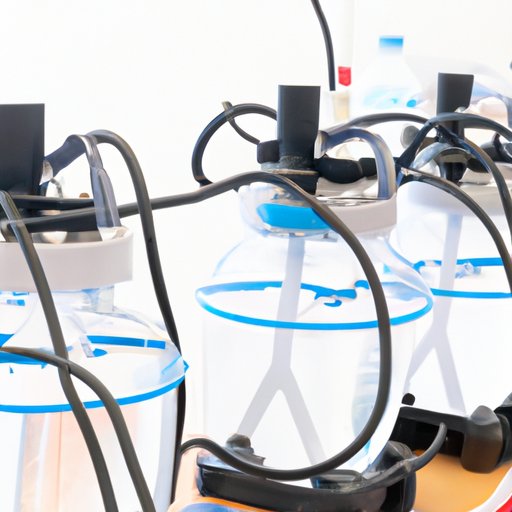Introduction
Water is a vital resource that we rely on every day, for drinking, cooking, and cleaning. However, not all water sources are safe or healthy to consume – that’s where water purification comes in. In this article, we will explore what purified water is, why it’s important, and the different methods and technologies used to purify water.
The Need for Water Purification
Water purification is necessary because untreated water can contain harmful contaminants like bacteria, viruses, parasites, and chemicals. Drinking this water can lead to a wide range of illnesses and diseases, from diarrhea and vomiting to serious infections. Waterborne illnesses are especially dangerous for vulnerable populations such as young children, pregnant women, and the elderly.
The Purification Process
Water purification is the process of removing contaminants from water to make it safe for consumption. The most common methods of purifying water are reverse osmosis, distillation, and filtration. Reverse osmosis involves forcing water through a semi-permeable membrane to remove impurities, while distillation involves boiling water and collecting the steam. Filtration methods include using activated carbon filters, ceramic filters, and sand filters.
Each method has its pros and cons. Reverse osmosis and distillation are effective at removing a wide range of contaminants but can be expensive and time-consuming. Filtration methods are generally less expensive and require less energy, but may not remove all contaminants and may require more frequent filter replacements.
Water Purification Technologies
In addition to the methods mentioned above, there are also various technologies used to purify water, such as UV radiation, ozonation, and chlorination. UV radiation uses ultraviolet light to kill bacteria and viruses, while ozonation uses ozone gas to break down pollutants. Chlorination involves adding chlorine to water to kill bacteria, but can also create disinfection byproducts that may be harmful.
The effectiveness of these technologies varies depending on the contaminant and the concentration present in the water. Some may be more effective than others, and some may only work in combination with other methods.
Benefits of Drinking Purified Water
Drinking purified water has numerous health benefits. By removing contaminants, purified water is less likely to cause illnesses and diseases. It can also improve the taste and odor of water, making it more appealing to drink. Additionally, purified water can be beneficial for certain household appliances, such as coffee makers and humidifiers, as it can reduce the buildup of mineral deposits.
In comparison to tap water, purified water is free of most contaminants and additives such as fluoride and chlorine, which some people may prefer. Drinking purified water is especially important for people with weakened immune systems, pregnant women and young children, who are more vulnerable to the effects of contaminated water.
Conclusion
Water purification is essential for ensuring safe and healthy drinking water. By understanding the different methods and technologies used to purify water, you can make an informed decision about which method is right for you. Regardless of the method chosen, drinking purified water has many benefits for your health and well-being.
Remember, access to safe water is not something everyone has, so appreciate it and make it a priority in your life.
